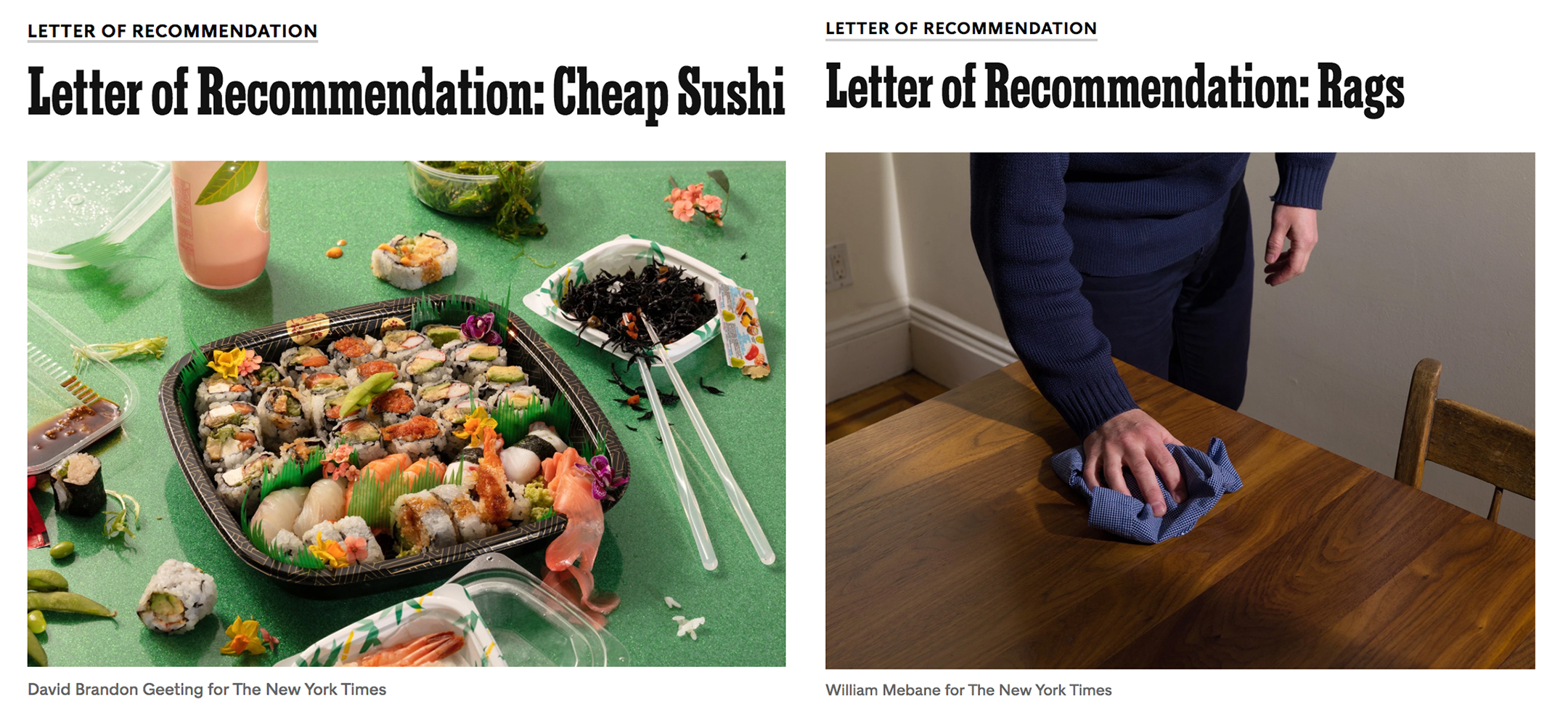
Handbook
Recommending Letters of Recommendation
One AP teacher’s use of a New York Times Magazine column in his classroom gives students new opportunities for developing their writing and voice
Nearly every issue of the weekly New York Times Magazine features the Letter of Recommendation column. It’s a space for Times writers to wax rhapsodic—at least for a few hundred words—about “the overlooked and underappreciated” objects and experiences in their lives. Recent topics have included bird feeders, cheap sushi, badly dubbed movies, and rags. You know, those overworked clumps of fabric you use to wipe down countertops or clean up spills.
It’s hard to imagine a less promising topic. But that’s exactly why Brendan Widness thinks they’re a perfect writing exercise for students.
Widness is an AP English Language and Composition teacher at Pope High School in Marietta, Georgia, and at last summer’s AP Annual Conference (APAC) he hosted a session about using the Times Magazine in his classroom. Letters of Recommendation, he said, “is a way of shifting students’ perspectives on everyday things in their lives. It takes some really creative rhetorical moves to keep it interesting.” The trick, he added, is to use the object of the essay as a kind of mirror to reflect something true and interesting about the writer.

TED Talks
AP English Language and Composition teacher Brendan Widness
Geoff Dyer’s essay on rags, for instance, is more a meditation on Dyer’s childhood and the passage of time than a straightforward celebration of an unheralded utilitarian object. The writer describes his parents carefully repairing or reusing everything in their lives, and how that led him to transform all of his worn-out shirts into something practical—like cleaning rags. The act of cleaning, then, becomes a kind of tribute to his upbringing and a communing with his parents and their example.
“I love the way you don’t have to think in order to clean, and I love the way that after two hours, you have unfailingly achieved something,” Dyer writes. “In addition to the feeling of accomplishment, I know that my parents would be proud of me for keeping our apartment nice and clean.”
Widness aims to encourage exactly that kind of self-reflection in his students, pushing them to encounter an object that inspires the right mix of surprise and personal meaning. “Writing about something you hate is easy,” Widness said. “Writing about something you love is much more revealing about you, about who you are and what you care about.”

The New York Times
During his APAC presentation, Widness passed out examples of his students’ work, from essays on ankle socks and the South African fast-food chain Nando’s to the “French Cafe” playlist on Pandora. “From casual to formal, or athletic to lounging—the ankle sock is there,” wrote the short-sock enthusiast in Widness’s AP English Language and Composition class. “It can look fresh with any outfit.” Holding such views, the writer argues, comes at a social cost — like getting mocked by your classmates. But personal judgment comes before peer pressure.
The Letters of Recommendation exercise helps Widness’s students develop their voices and skills as writers in the encouraging environment of the classroom. But it also serves as practice for an exercise where the stakes are greater than a simple grade. “It allows them some more free reign in their style than they’re used to,” Widness said. “They’ll need that when it comes time to write those college essays, where a formulaic approach doesn’t work very well,” and where students who share things that matter to them in ways that demonstrate personality and values stand out from other applicants.
I’m a longtime reader of the Times Magazine, and usually skipped over the Letter of Recommendation column. (An essay on the joys of pretentious wine reviews? Really?) But I’ve become a believer. Whenever I sit with the magazine on Sunday mornings, I think about Widness and his students. There’s a creative genius to these offbeat love letters—and it took Widness’s recommendation of the recommendations to make me see it.
“The great ones are both personal and universal,” Widness said of the Times Magazine column. “That’s what I tell the students to strive for: make it relatable to anyone.”


